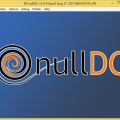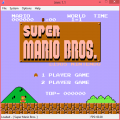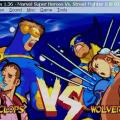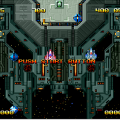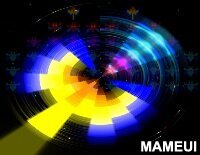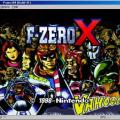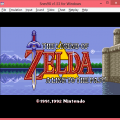Added tap on touchscreen as a lightgun device (only must be enabled for light gun games like operation wolf).
Added Tilt sensor option to tap anywhere on screen to fire.
Added game filterering (clones, favorites, year, category, manufacturer, driver source...).
Some bug fixes.
- 0 replies
- 3,200 views
- Add Reply
- Support for vertical text in the Postscript driver.
- Version 2 of liblcms used now instead of version 1.
- Unicode data updated to Unicode 6.2.0.
- Hyperlink controls supported in installers.
- Improved support for XML attributes.
- Various bug fixes.
- 0 replies
- 2,346 views
- Add Reply
- 0 replies
- 1,237 views
- Add Reply
- 0 replies
- 1,626 views
- Add Reply
MAME4droid Reloaded 1.4.1
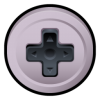
Description:
MAME4droid Reloaded is developed by David Valdeita (Seleuco), port of MAME 0.139 emulator by Nicola Salmoria and TEAM.
MAME4droid Reloaded emulates arcade games supported by original MAME 0.139.
This MAME4droid version is targeted to Dual-Core devices (1GHz and 512MB RAM minimum), because it is based on a high specs 2010 PC MAME build.
Anyway don't expect arcade games of the 90 to work at full speed. With some games that are really bad optimized (like outrun or mk series) you will
need at least a 1.5 ghz dual-core device (Cortex A15). This is related to MAME build used, since it is targeted to high specs PC's as i said before.
This version doesn't have an UML back-end ARM dynamic recompiler, which means drivers based on high specs arcade CPUs won't be playable
(it has not sense since this games will be slow in any case).
Change log:
Wine 1.7.0

Description:
Wine (originally an acronym for "Wine Is Not an Emulator") is a compatibility layer capable of running Windows applications on several POSIX-compliant operating systems, such as Linux, Mac OSX, & BSD. Instead of simulating internal Windows logic like a virtual machine or emulator, Wine translates Windows API calls into POSIX calls on-the-fly, eliminating the performance and memory penalties of other methods and allowing you to cleanly integrate Windows applications into your desktop.
Wine began in 1993 under the initial coordination of Bob Amstadt as a way to support running Windows 3.1 programs on Linux. Very early on, leadership over Wine's development passed to Alexandre Julliard, who has managed the project ever since. Over the years, as the Windows API and applications have evolved to take advantage of new hardware and software, Wine has adapted to support new features, all while being ported to other OSes, becoming more stable, and providing a better user-experience.
An ambitious project by definition, work on Wine would steadily continue for 15 years before the program finally reached v1.0, the first stable release, in 2008. Several releases later, Wine is still under active development today, and although there is more work to be done, millions of people are estimated to use Wine to run their Windows software on the OS of their choice.
Change log:
2013-08-02 Recent Releases

MEWUI 0.201 - 0.149u1 - http://sourceforge.net/projects/mewui/files/
Common Source Code Project 2013-08-02 - http://homepage3.nifty.com/takeda-toshiya/main.html
Emuloader 7.2 - http://emuloader.mameworld.info/
MameUIhiscore 0.149u1 - http://mameuihi.alfmans-community.de/Download.html
SDLMAME for Ubuntu 0.149u1 - http://sdlmame.wallyweek.org/download/
Catlist 0.149u1 - http://www.progettoemma.net/history/catlist.php
ClrMamePro 4.011 - http://mamedev.emulab.it/clrmamepro/
HqMAME 2.10 - 0.149u1 - http://sourceforge.net/projects/hqxmame/files/
jpcsp r3327 - http://www.jpcsp.org/
QEMU 1.5.2 - http://wiki.qemu.org/Index.html
SDLMAME for OSX 0.149u1 - http://sdlmame.lngn.net/
Ami/WinArcadia 21.3 released
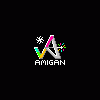
WinArcadia 21.3 (Windows): 1 August 2013
AmiArcadia 21.3 (AmigaOS 3): 1 August 2013
AmiArcadia 21.3 (MorphOS): 1 August 2013
AmiArcadia 21.2 (AmigaOS 4): 19 July 2013
Super Bug Advance 1.3 (GBA): 11 September 2009
AmiArcadia and WinArcadia are multi-emulators of these machines:
* Emerson Arcadia 2001 console family (Bandai, Emerson, Grandstand,
Intervision, Leisure-Vision, Leonardo, MPT-03, Ormatu, Palladium, Poppy,
Robdajet, Tele-Fever, Tempest, Tryom, Tunix, etc.) (1982);
* Interton VC 4000 console family (Acetronic, Fountain, Interton,
Prinztronic, Radofin, Rowtron, Voltmace, Waddington, etc.) (c. 1978);
* Elektor TV Games Computer (1979);
* PIPBUG-based machines (Electronics Australia 77up2 and 78up5, Signetics
Adaptable Board Computer, Eurocard 2650, etc.) (c. 1977-1978);
* Signetics Instructor 50 trainer (1978);
* Central Data 2650 computer (1977);
* Astro Wars, Cat and Mouse, Galaxia, and Laser Battle coin-ops by
Zaccaria (1979-1982);
* Malzak 1 and 2 coin-ops by Kitronix (c. 1980);
* Chaos 2 computer (1983);
* Dolphin trainer (1977);
* PHUNSY computer (c. 1980);
* AY-3-8550/8600-based Pong systems (c. 1976-1977); and
* Ravensburger Selbstbaucomputer aka 2650 Minimal Computer trainer (1984).
Features include: ReAction GUI, load/save snapshots, windowed and full-
screen modes, CPU tracing, trainer, drag and drop support, graphics
scaling, automatic load/save of configuration/game, keyboard/joystick/
gamepad/paddle/mouse/trackball support, autofire, turbo mode, gameplay
recording/playback, PAL/NTSC modes, sprite demultiplexing, help windows,
source code, debugger, frame skipping, redefinable keys, save screenshots
(4 supported formats), ARexx port, network play, real-time monitor, locale
support, game selection sidebar, text-to-speech, printer output,
undithering, support for ZIPped games, clipboard support, palette editor,
tone retuning, high score management, force feedback, sprite editor, 3D.
The supported languages are currently English, Dutch, French, German,
Greek, Italian, Russian and Spanish.
Changes since V21.2:
* Interton, Elektor: improved sound emulation.
* Support for game-specific comments.
* Miscellaneous improvements and bug fixes.

